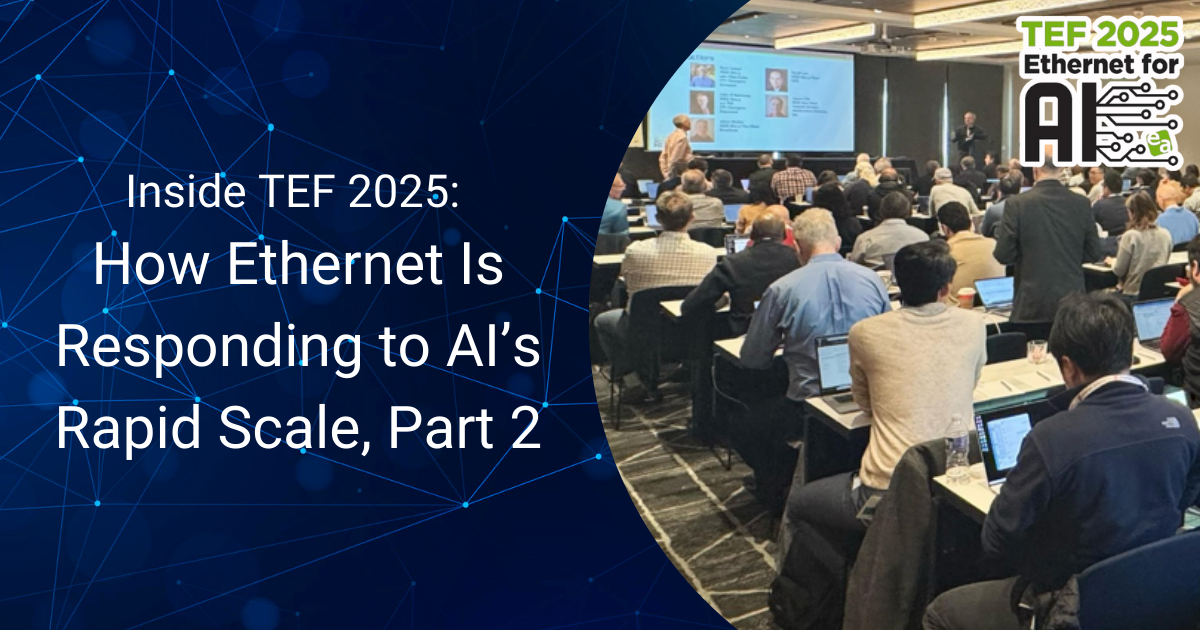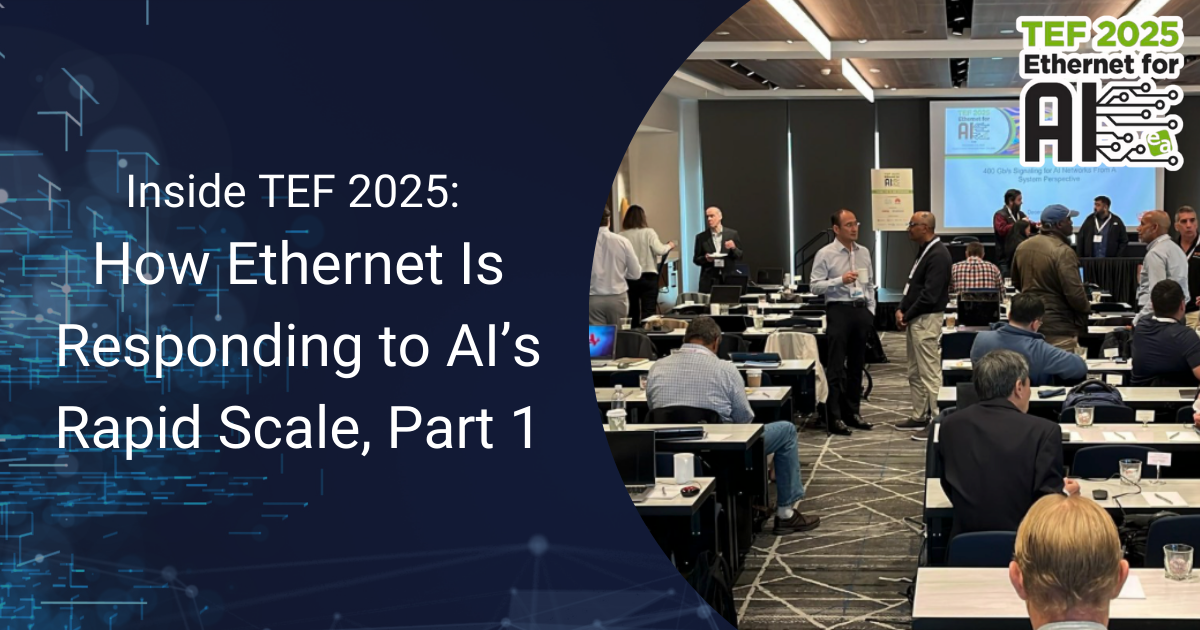Under the Big Tent: Ethernet Alliance Unites the Ethernet Ecosystem at OFC 2024
OFC was quite the place to be this year to witness the best that technology innovation has to offer. With a 20-member company strong contingent behind it, the Ethernet Alliance hosted one of the largest interoperability demonstrations at OFC 2024, putting the whole Ethernet ecosystem on display. Showcasing exceptional versatility and reliability at speeds of up to 800 Gigabit Ethernet (GbE), our annual demo also included a cutting-edge LPO display illustrating Ethernet’s capacity for handling hyperscale, AI/ML workloads, and other demand-intensive applications.
With so many moving parts, these interoperability demos are only made possible through the dedicated efforts of Ethernet Alliance technical leads. And at OFC 2024, technical leads Keith Cole of VeEX; Dave Estes of Spirent; and Jean Marie Villain of ExFO truly outdid themselves. In this blog, they offer their unique perspectives and key takeaways from one of OFC 2024’s most popular exhibits.

What is your biggest takeaway from the Ethernet Alliance’s 2024 OFC interoperability demo?
Keith Cole: My biggest takeaway from the demo is the wide range of technologies OFC attendees were interested in hearing about.
Our overall demonstration ranged from very mature 10GE, all the way to the cutting-edge 800GE technologies, pluggable optics, and even an innovative LPO technology demo. Though there certainly was keen interest in the latest and greatest such as LPO and 800/400GE, there was as much if not more attention being paid to interoperability of the more mature technologies.
I believe the diversity of technologies is one of the most important aspects of the Ethernet Alliance demo. If you think about it, it makes perfect sense. In the end, new technology and faster rates are very important for the industry, yet in many cases, they still need to be interoperable with the lion’s share of previously deployed equipment and technology. Not everyone deploying or supporting equipment in the industry requires the latest technology and port rate capability; rather, it’s all based on their individual requirements and environment.
Dave Estes: My biggest takeaway is just how ready everyone is for 800G. I think we had a wider range of 800G interconnects than we ever had for 400G or any other speed – we had OSFP and QSFP-DD interfaces for DACs, AECs, ACCs, AOCs, pluggable optical modules, and LPO optics. Interest in 800G is already high but is still growing rapidly.
Jean Marie Villain: My biggest takeaway from the Ethernet Alliance OFC 2024 interoperability display is the success we had in showcasing multiple data rates – 800GE, 400GE, 100GE – with a mix of high-speed technology like coherent and direct detect. We also brought the industry a live LPO technology demonstration that connected to our switch fabric, using different kinds of interconnects including fiber optics, DAC, ACC, and AOC. We know that point-to-point link training is key for the DAC connection at 800GE, so one of the highlights of the demo was clearly illustrating the link 800G link training performance between device and the switch.
Why is multi-vendor interoperability so important to the industry?
Keith Cole: Multi-vendor interoperability demonstrations are important to the industry because they showcase typical real-world mixed vendor scenarios that are functional, promoting a certain level of confidence in the technology. Additionally, they bring individuals together from across the Ethernet ecosystem, opening the door to valuable discussions.
Dave Estes: Multi-vendor interoperability is one of the main drivers for Ethernet’s success. Without it, network operators would be hesitant to adopt newer speeds and technologies. It also increases innovation by allowing interconnects from any brand to connect to switches of any brand, so you have more flexibility and options for finding the interconnect that best fits your network.
Jean Marie Villain: It is critically important, as networks are becoming increasingly complex with the technology mix. This is a significant challenge across the industry, as there’s a need to optimize the network while mitigating interoperability issues. A multi-vendor interoperability demo is a quick and easy way to show how different vendors can interconnect based on standardized technology.
To learn more about the challenges and benefits of producing a live interoperability demonstration, register for our upcoming webinar on Wednesday, May 29th at 10 am PT / 1 pm ET: Why Ethernet ‘Just Works’ – Building an Interoperability Demonstration




